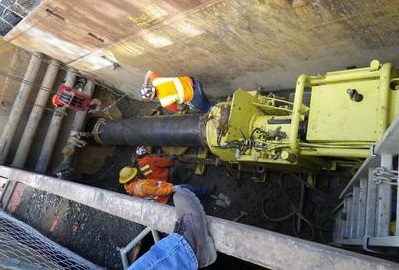Pilot Tube Micro tunneling Technology
Brightway will collect and edit some industry technical articles about "Micro tunneling, Pipe jacking, Trenchless" from internet for you. If you are interested in the industy articles, Please follow us. Today Brightway introduce the unusual tunneling construction methods, that is Pilot Tube Microtunneling Technology.
Pilot tube microtunneling uses a guided boring process to jack hollow steel rods through the ground to pilot a hole for the new pipe. The new pipe is then directly jacked behind the pilot tubes. This process avoids long, open trenches, which means minimal intrusion to the area above ground.
This method is useful for projects that require pinpoint accuracy for pipe replacement. Pilot tube microtunneling involves these steps:
1. Excavate and prepare driving and receiving shafts.
2. Set up a thrust frame in the driving shaft.
3. Set up a camera-mounted guidance system in the driving shaft. The camera connects to a video monitor in the driving shaft that monitors line and grade.
4. Set up the steering head and target. Steering heads can vary based on soil conditions.
5. Install the pilot tube behind the steering head and begin boring.
6. When the steering head reaches the receiving shaft, connect the reamer and casing with the auger inside to the last segment of pilot tube.
7. Retrieve the steering head and the pilot tubes.
8. After the reamer reaches the receiving shaft, install an adapter at the end of the last casing which connects the casing and product pipe.
9. The jacking frame pushes the pipe while the casings are retrieved at the receiving shaft.
10. The augers remove the soil in the casings and are retrieved at the driving shaft
What to Expect During Pilot Tube Microtunneling
1. The equipment is loud and causes vibration that you may feel in your home or business. This is standard for this method of construction.
2. This method of construction requires some very large construction equipment to install pipe.
3. Both preparation and post-pilot tube microtunneling work can take a few weeks to complete.
4. Shafts are usually too large to cover safely with steel plates during non-construction hours. Site fencing is necessary to secure these areas during non-construction hours.
5. There may be road closures and lane restrictions.
6. There may be inactivity between some phases of this process.
The article comes from internet, edited by Brighway. The original link: https://www.portlandoregon.gov/bes/article/486795
